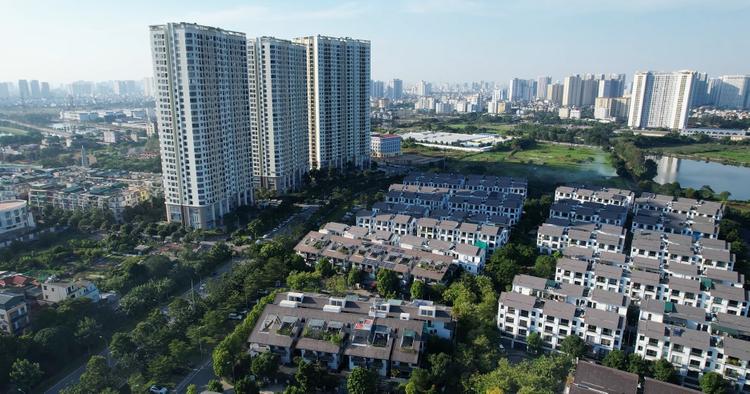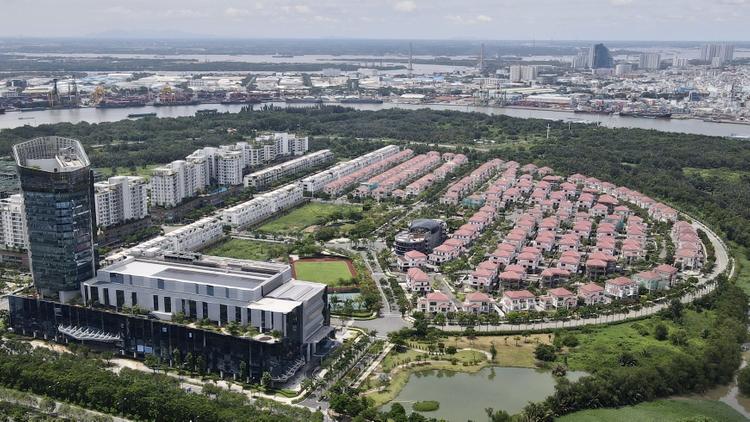The Vietnamese real estate market is witnessing a dramatic change in investment thinking and behavior. Data from Batdongsan.com.vn shows that capital flows are clearly shifting from speculative products to assets that provide stable cash flows such as apartments and townhouses. This change reflects a more cautious stance of investors in the context of a stable macro-economy, controlled credit and expectations that the market is moving towards sustainable growth rather than short-term.
The Market Shifts Strongly Towards Cash Flow Trends
Regarding the developments of the real estate market in the first 10 months of the year, Mr. Nguyen Quoc Anh, Deputy General Director of Batdongsan.com.vn, said that the Vietnamese real estate market is being viewed in an inaccurate “general” way. According to him, real estate is a special type of commodity, divided into many segments, from high-end, mid-range to social housing. Each customer group has different needs, financial capabilities and expectations. Therefore, “gathering” all types to talk about the trend of price reduction or general adjustment is unfounded.

Consumer survey data conducted by Batdongsan.com.vn every 6 months gives remarkable figures. Accordingly, 83% of survey participants are in the age group of 18-44, the group with real housing needs, 65% of whom have an average income of 15-50 million VND/month, reflecting the finances of home buyers in the current market. Notably, up to 55% of people said they had recently bought real estate and 10% had sold, meaning nearly 70% of respondents had transactions. Of which, 64% bought to live, and 36% bought to invest.
The most popular types of investment are currently apartments (34%), land (33%) and private houses (21%). However, the trend is clearly changing. In the next 12 months, 33% of respondents said they would invest in private houses and 31% still chose apartments. In contrast, the interest in land has decreased sharply, reflecting the shift of investors from speculative products to products with stable cash flow.
“The market is moving towards types of properties that can be exploited for real use, especially residential products – this is a clear manifestation of a safe investment mentality,” Mr. Nguyen Quoc Anh emphasized. Deputy General Director of Batdongsan.com.vn affirmed that in the context of a gradually stabilizing macro-economy, investors prioritize assets with the ability to generate stable profits instead of just waiting for prices to increase. When market sentiment is strengthened by policy factors, interest rates or macroeconomic confidence, new investors tend to gradually shift to highly speculative assets such as land or resorts.
In fact, apartments and townhouses have been the two types of housing leading the recovery in Hanoi, Da Nang and Ho Chi Minh City in the past two years. The land segment alone – considered a “measure” of speculation – is still down an average of 22% nationwide compared to the same period. Except for a short increase at the end of 2024 thanks to information about administrative mergers, the land market has hardly recorded a significant recovery.
The Market Is Strongly Differentiated In Price By Region
The Deputy General Director of Batdongsan.com.vn commented that one of the notable points of the current market is the strong differentiation in price and area. Data from Batdongsan.com.vn shows that the price of 100 million VND/m2 that is being widely mentioned in the media actually only reflects newly opened projects in the center. Meanwhile, if we count both new and old apartments, many areas still record prices below 100 million VND/m2.

In Hanoi, the Tay Ho area currently has an average price of about 106 million VND/m2, while Nam Tu Liem is only about 77 million VND/m2, Bac Tu Liem is 84 million VND/m2 and Long Bien is 67 million VND/m2. The trend of moving from the center to the suburbs is taking place strongly, especially when the connecting infrastructure is increasingly complete.
According to Mr. Quoc Anh, the price increase in the non-central area has also caused the market to have new “hot spots”. For example, Thanh Tri recorded an increase of up to 119%, reaching an average of 60 million VND/m2; Gia Lam increased by 114%, to about 67 million VND/m2. This makes many investors worry about the risk of “exceeding the peak” in prices in the context of the income level not having much corresponding improvement.
Mr. Quoc Anh said that the current price increase cycle has many different factors compared to the previous period. If in the past, when money flow was cheap and credit was abundant, risky assets such as land often increased strongly first, now the trend has reversed: gold, stocks and real estate cash flows are increasing in parallel. “Investors are both accumulating gold for defense and allocating capital to assets with stable profits, but still do not feel really safe,” he commented.
One point he emphasized was that speculation should not be viewed as entirely negative. Because in any investment market, if there are only home buyers, short-term liquidity will decline, making the market less attractive. On the contrary, if there is only speculation, prices will be pushed up too much. The important thing is to balance investment and speculation – in which long-term investors should account for a larger proportion.
